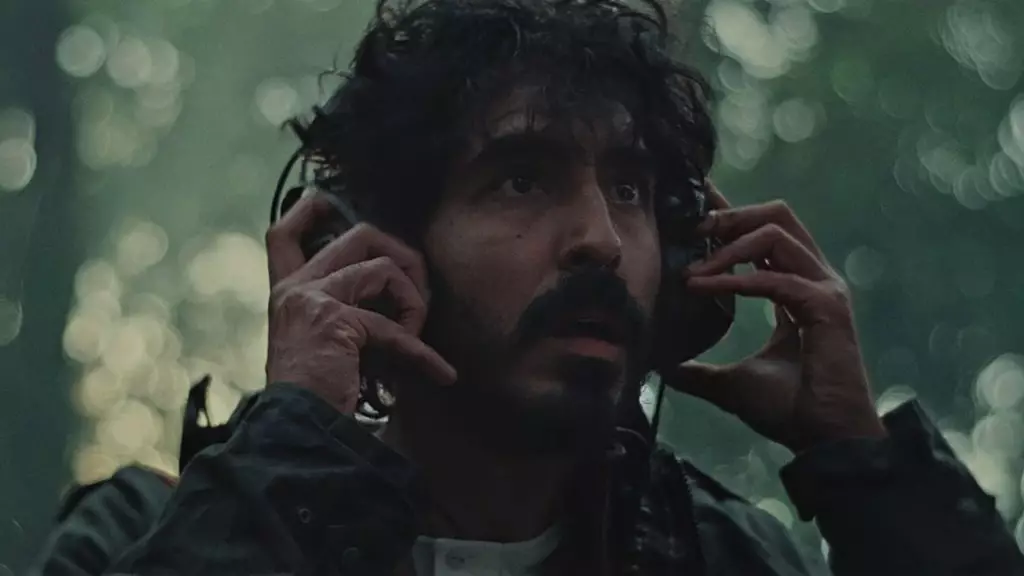In the realm of contemporary cinema, Bryn Chaney makes a remarkable entrance with his feature debut, “Rabbit Trap.” The film nestles itself in the intricate tapestry of Celtic folklore, drawing viewers into a world that is both haunting and beautiful. By setting the narrative in the year 1973, Chaney offers a nod to a transformative period in music and culture, laying the groundwork for an exploration that transcends mere storytelling. The central characters, Darcy and Daphne, portrayed by Dev Patel and Rosy McEwen respectively, emerge not just as a couple but as embodiments of artistic ambition and deeply-rooted emotional turmoil.
The film’s premise revolves around a couple’s retreat to a secluded, serene cabin in the Welsh countryside, a choice steeped in significance. This isolation serves as both a sanctuary and a crucible for their creative endeavors, where sounds of nature transform into ethereal melodies. Darcy, the male lead, inadvertently taps into a world beyond the human experience when he captures a sound that conjures ancient mystical entities. This pivotal moment is more than a plot device; it is a catalyst that unearths latent fears and traumas deeply embedded in the characters’ psyches.
One of the most striking elements of “Rabbit Trap” is its innovative use of sound. Far from being a mere accompaniment to the visuals, sound serves as a character in its own right. The film effectively employs Dolby sound technology, immersing the audience in a cascade of hypnotic soundscapes. The ambiance created by field recordings—like the gentle patter of rain, the stark clang of metal, and the soft crunch of grass underfoot—invites viewers into an intimate sensory experience. As Darcy passionately articulates, “sound is a ghost” that revokes and manifests feelings often left unsaid.
This nuanced portrayal of sound also evokes a duality. While it enriches the creative process of the couple, it simultaneously delves into their existential struggles. For instance, Darcy’s experiences with sleep paralysis act as a dark mirror reflecting his internal struggles, with Daphne capturing his nocturnal murmurs. These whispers further materialize the dread that looms over them, transforming the psychological into the auditory landscape.
The dynamic between Darcy and Daphne transcends the conventional boundaries of relationships often presented in film. As they grapple with their creative blocks, their bond intricately fluctuates between passion and tension. Daphne’s artistic rebirth—exemplified through rapturous, almost hallucinogenic sequences—shows her seduction by the very sound that threatens to unravel Darcy. The film posits sound and creativity as entwined forces that can elevate or devastate, illustrating how the act of creation can be a perilous journey when fraught with unspoken fears.
The introduction of a mysterious child—played with maturity and depth by Jade Croot—adds another layer to the narrative. This nameless figure draws close to the couple, sharing local lore and processing their own troubled affections. He serves as a reflection of the couple’s unconscious desires for companionship and familial connection, even as he wields a sense of foreboding. Through the array of emotions Croot expresses, the layers of trauma buried within both Darcy and Daphne become more pronounced, revealing the fragility of their creative identities.
“Rabbit Trap” stands as a testament to Bryn Chaney’s innovative voice in the filmmaking landscape. He successfully engages with themes of creativity, trauma, and the mystical, using sound not simply as an audial tool but as a profound narrative device that unearths the realities of human existence. With the remarkable performances of Patel and McEwen, Chaney’s vision materializes into a haunting tale that deeply resonates—underscoring not just the personal stories of its characters, but also their universal truths.
In a cinematic atmosphere where narratives often prioritize spectacle over emotional depth, “Rabbit Trap” dives into an abyss often unexplored. Thus, the film invites audiences to consider both the beauty and darkness that interplay within the act of creation—a resonant echo that lingers long after the credits roll. As we bear witness to this promising feature debut, one must appreciate the intricate balance between sound and silence, light and dark, and the haunting echoes of both our personal and collective histories.



Leave a Reply